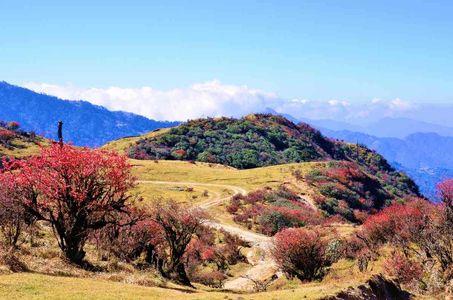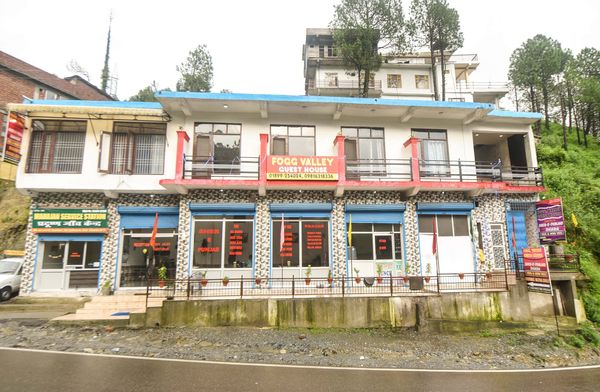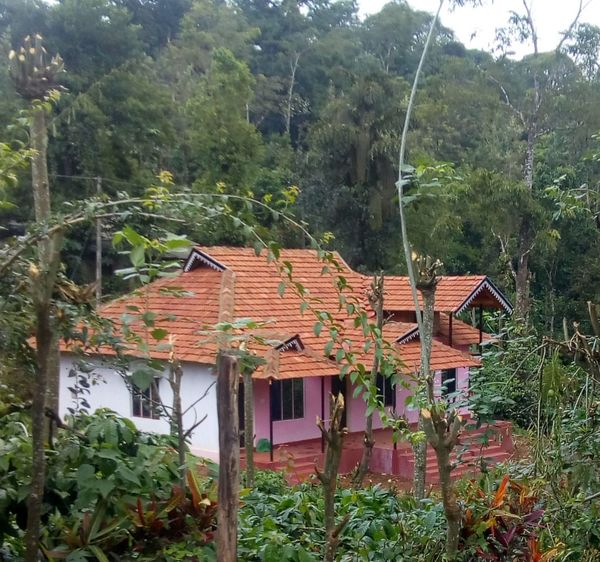Exploring Singalila National Park: A Himalayan Jewel
 Vikram Singh
17 Dec, 2024
9 mins read
507
Vikram Singh
17 Dec, 2024
9 mins read
507

Located in the eastern Himalayas, Singalila National Park stands as one of India’s most breathtaking and ecologically diverse national parks. Known for its stunning landscapes, rich biodiversity, and panoramic views of the Himalayan mountain range, this national park is a must-visit for nature lovers, wildlife enthusiasts, and trekkers. Located at an altitude of 2,100 meters to 3,636 meters above sea level, Singalila National Park offers a unique and serene escape into the heart of nature, providing opportunities to explore both its flora and fauna.
Singalila National Park: Location and Overview
Singalila National Park is situated in the Darjeeling district of West Bengal, India. It lies along the India-Nepal border, forming a natural boundary between the two countries. The park is part of the greater Singalila Ridge, a prominent range in the eastern Himalayas that runs along the northernmost edge of the Darjeeling district. Spanning an area of 78.6 square kilometers, Singalila National Park is renowned for its varied terrain, which includes dense forests, alpine meadows, and rocky outcrops. The park offers an unparalleled view of some of the highest peaks in the world, including Kanchenjunga, the third-highest mountain on the planet.
The park is easily accessible from Darjeeling, which is about 50 kilometers away. Travellers can reach the park via a road journey, and from there, several trekking routes within the park lead to some of the most spectacular viewpoints and remote areas of natural beauty.
Singalila National Park: Rich Biodiversity
Singalila National Park is home to a rich array of flora and fauna, making it an ideal destination for wildlife enthusiasts and nature lovers. The park’s elevation, diverse ecosystems, and varied climate provide the perfect habitat for a variety of species. It is well-known for being one of the few places in India where one can experience the beauty of the Eastern Himalayan ecosystems up close.
Flora of Singalila National Park
The park is home to a wide range of plant species, which thrive due to the park's location in the Himalayan foothills. The flora includes temperate and sub-alpine forests, with species such as oak, rhododendron, and magnolia. These forests support a diverse range of plant life, from towering trees to vibrant wildflowers. In addition to these, you can also find the endemic Singalila Rhododendron in full bloom during the spring months, creating a colorful landscape that adds to the park’s charm.
The park's higher altitudes are dominated by alpine meadows, which house a variety of shrubs and grasses, providing food for herbivores and offering panoramic views of the surrounding mountains.
Fauna of Singalila National Park
Singalila National Park is home to a variety of wildlife species, including some that are endangered or rare. The park's diverse habitats support many mammals, birds, reptiles, and insects, and its conservation efforts make it a vital area for protecting these species.
Singalila National Park is famous for the presence of the Red Panda, a species that is both elusive and endangered. The Red Panda is the park’s most iconic animal, and the park provides one of the best opportunities to spot this remarkable creature in its natural habitat. These shy animals are arboreal and are typically found in the dense bamboo forests of the park. Visitors who are fortunate enough to catch a glimpse of the Red Panda will be rewarded with a rare and magical experience.
Besides the Red Panda, the park is also known for the Himalayan Black Bear, which can be seen in the dense forests and hilly terrain of the park. This species, like the Red Panda, is also an endangered one, making Singalila an important conservation area.
Other notable species that can be found within the park include the Clouded Leopard, Bengal Tiger, Leopard, and various species of deer, including the Sambar and Barking Deer. The area is also home to several species of primates, such as the Himalayan Langur and the Rhesus Macaque.
The birdlife in Singalila National Park is equally impressive. The park provides a home to over 200 species of birds, making it a haven for birdwatchers. Some of the species that can be spotted include the Himalayan Monal, Kalij Pheasant, and Satyr Tragopan, which are found in the park’s high-altitude meadows and forested regions.
Singalila National Park Trekking
Singalila National Park is a popular destination for trekkers due to its well-established trekking routes and the chance to explore the stunning Himalayan landscape. The Singalila Ridge Trek, which runs through the park, is one of the most famous treks in the region. This trek takes trekkers through dense forests, alpine meadows, and remote mountain villages, offering breathtaking views of Kanchenjunga, Makalu, and other peaks.
The trek passes through key spots like Tonglu, Sandakphu, and Phalut, with many trekkers choosing to start from Manebhanjan near Darjeeling. The trek is known for its rewarding views of the sunrise and sunset, as the peaks of the Himalayas light up in hues of pink and orange. It is a perfect trek for those who want to immerse themselves in the natural beauty of the Himalayas and spot rare wildlife along the way.
Singalila National Park: Best Time to Visit
The best time to visit Singalila National Park is during the months of March to May and September to November. During these months, the weather is pleasant, with moderate temperatures and clear skies, making it ideal for trekking and wildlife spotting. The spring months (March-May) are particularly beautiful, as the rhododendron flowers bloom and the park is lush with greenery.
The monsoon season (June-August) should be avoided due to heavy rainfall, which can make trekking routes slippery and inaccessible. The winter months (December-February) bring cold temperatures, and higher altitudes may experience snowfall, making it an ideal time for snow lovers but potentially difficult for trekking.
Singalila National Park: How to Reach
Singalila National Park is well-connected to Darjeeling and other major towns in the region.
- By Road: The park can be reached from Darjeeling via a road journey of about 50 kilometres.
- By Rail: The nearest railway station is New Jalpaiguri, around 80 kilometres from the park.
- By Air: The nearest airport is Bagdogra, which is approximately 88 kilometres from Singalila National Park.
From Darjeeling, taxis or jeeps are available to take visitors to the park's entry points. It is advisable to hire a local guide to enhance your experience and ensure safety while trekking.
Conclusion
Singalila National Park is a hidden gem in the eastern Himalayas, offering natural beauty, a wide array of wildlife, and unparalleled views of the Himalayan peaks. Known primarily for being home to the Red Panda, the park’s diverse flora and fauna, along with its trekking routes, make it a must-visit for nature enthusiasts and adventure seekers. Whether you are a wildlife lover, a photographer, or someone who simply wants to experience the grandeur of the Himalayas, Singalila National Park offers an unforgettable journey.
Written By:
Vikram Singh



Hotels at your convenience
Now choose your stay according to your preference. From finding a place for your dream destination or a mere weekend getaway to business accommodations or brief stay, we have got you covered. Explore hotels as per your mood.





